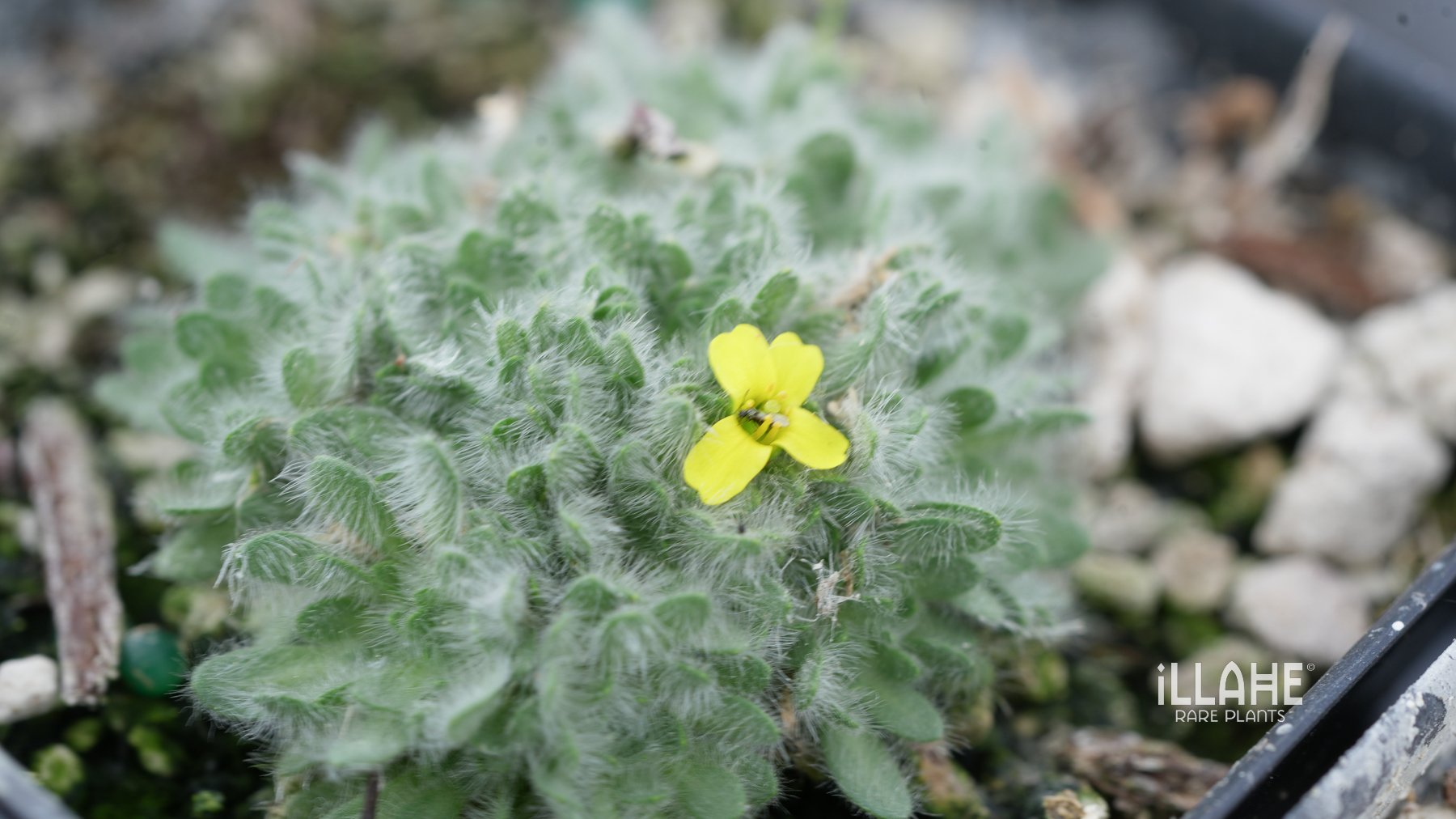


Dudleya collomiae
Dudleya collomiae is a rare and elegant rosette-forming succulent, prized for its waxy, bluish to silvery-gray leaves arranged in tight spirals. In late spring, it sends up delicate flowering stems bearing clusters of small, pale yellow to blush-pink star-shaped flowers, adding soft contrast to the sculptural foliage. Its compact size and striking form make it ideal for containers, rock gardens, and crevice settings. The Gila county live forever!
Native Range:
Endemic to Arizona, particularly the rugged mountain ranges of central and southern parts of the state—including the Sierra Ancha and Mazatzal Mountains—Dudleya collomiae grows in rocky outcrops, canyon walls, and cliff faces, often in partial shade.
This Dudleya species thrives in rock gardens that mimic its native mountainous habitat: sharply drained soils, bright light with some afternoon shade, and minimal moisture. Perfect for tucking into vertical crevices, gravel beds, or container displays where its foliage can stay dry and cool. In climates with summer rainfall, shelter from excess moisture is essential—consider placing under overhangs or using a gravel mulch to reduce splash-back.
These are bit bigger than my normal 2.5” potted plants so will be shipped bareroot and ready for planting immediately.
Dudleya collomiae is a rare and elegant rosette-forming succulent, prized for its waxy, bluish to silvery-gray leaves arranged in tight spirals. In late spring, it sends up delicate flowering stems bearing clusters of small, pale yellow to blush-pink star-shaped flowers, adding soft contrast to the sculptural foliage. Its compact size and striking form make it ideal for containers, rock gardens, and crevice settings. The Gila county live forever!
Native Range:
Endemic to Arizona, particularly the rugged mountain ranges of central and southern parts of the state—including the Sierra Ancha and Mazatzal Mountains—Dudleya collomiae grows in rocky outcrops, canyon walls, and cliff faces, often in partial shade.
This Dudleya species thrives in rock gardens that mimic its native mountainous habitat: sharply drained soils, bright light with some afternoon shade, and minimal moisture. Perfect for tucking into vertical crevices, gravel beds, or container displays where its foliage can stay dry and cool. In climates with summer rainfall, shelter from excess moisture is essential—consider placing under overhangs or using a gravel mulch to reduce splash-back.
These are bit bigger than my normal 2.5” potted plants so will be shipped bareroot and ready for planting immediately.








